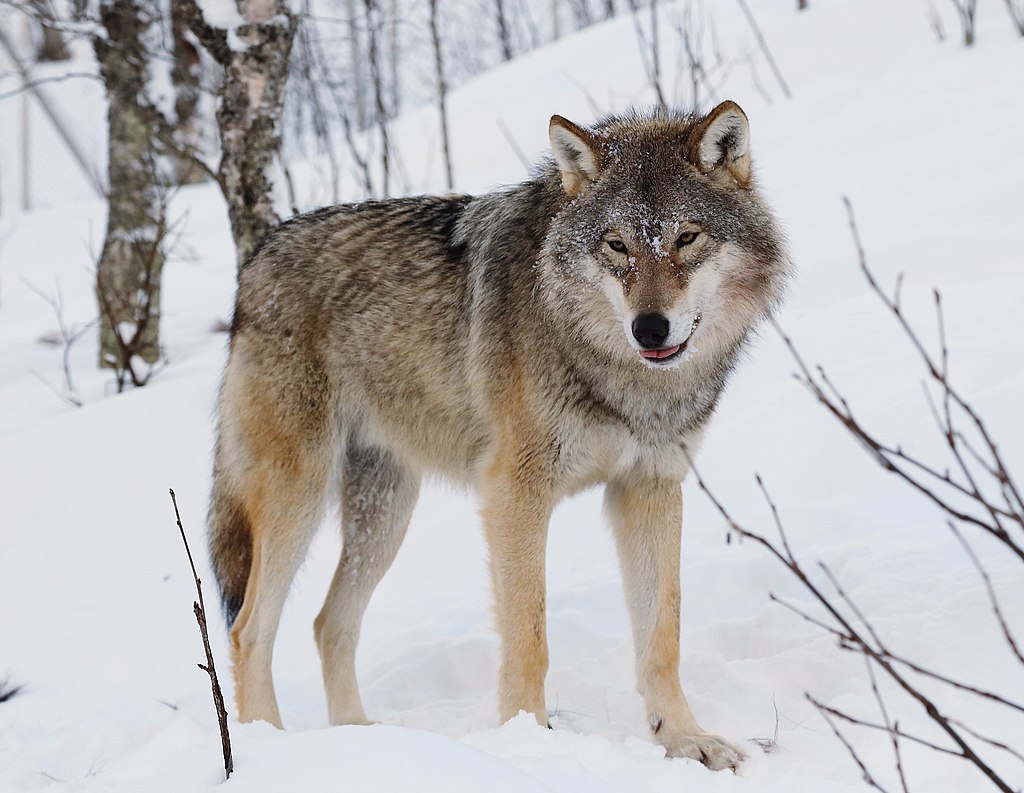Wolves, enigmatic creatures of the wild, have long fascinated humans with their intelligence, social structure, and haunting howls that echo through the wilderness. Despite being misunderstood and often feared, wolves play a crucial role in maintaining ecological balance and preserving biodiversity. For nature enthusiasts and wildlife lovers, observing wolves in their natural habitat is a dream come true. In this article, we will explore the top 10 places around the world where you can experience the magic of encountering wolves up close while respecting their natural environment.

Yellowstone National Park, USA
Yellowstone National Park, located primarily in Wyoming but extending into Montana and Idaho, is one of the best places to see wolves in North America. In the early 20th century, wolves were almost driven to extinction in the park, but successful reintroduction efforts in the 1990s have led to a thriving population. The Lamar Valley, often referred to as the “American Serengeti,” is a hotspot for wolf watching. Yellowstone’s extensive network of roads and knowledgeable park rangers make it accessible and enjoyable for visitors seeking wolf encounters.
Algonquin Provincial Park, Canada
Nestled in the heart of Ontario, Canada, Algonquin Provincial Park is a vast wilderness known for its pristine lakes, dense forests, and diverse wildlife. This park is home to the Algonquin Wolf, a subspecies of the gray wolf. While sightings can be challenging due to the wolf’s elusive nature, hearing their haunting howls under a starlit sky is a once-in-a-lifetime experience. Wildlife photographers and dedicated enthusiasts will find joy in the thrill of tracking and observing these elusive creatures in their natural environment.
Yellowstone to Yukon Conservation Initiative, USA/Canada
The Yellowstone to Yukon (Y2Y) Conservation Initiative is not a specific location but a massive transboundary region spanning parts of the United States and Canada. This conservation effort aims to create a continuous corridor for wildlife movement, including wolves, from Yellowstone National Park in the USA to the Yukon in Canada. The Y2Y region offers opportunities to witness wolves’ migration and explore vast expanses of pristine wilderness, making it an unforgettable adventure for wildlife enthusiasts.
Białowieża Forest, Poland/Belarus
Białowieża Forest, straddling the border between Poland and Belarus, is one of Europe’s last remaining primeval forests. This UNESCO World Heritage site is home to the Eurasian gray wolf, a subspecies found throughout Europe and Asia. Exploring Białowieża offers a chance to witness the complex interactions between wolves and their prey, such as bison and deer, in a unique and ancient ecosystem that has been relatively untouched by human influence.
Denali National Park, USA
Denali National Park, located in Alaska, USA, is renowned for its rugged beauty and diverse wildlife, including the gray wolf. The park’s vast wilderness and limited road access make for a more challenging but rewarding wolf-watching experience. Park regulations prioritize the protection of wildlife, and visitors are encouraged to maintain a safe distance and use binoculars or spotting scopes to observe wolves without causing disturbance.
Abruzzo National Park, Italy
Nestled in the Apennine Mountains of Italy, Abruzzo National Park provides a unique opportunity to see the elusive and endangered Italian wolf. This subspecies of the gray wolf is native to Italy and represents a significant conservation success story. While the park’s wolves are shy and mostly nocturnal, the visitor center offers educational programs and guided excursions that enhance the chances of witnessing these magnificent creatures in their natural habitat.
Isle Royale National Park, USA
Isle Royale, an island located in Lake Superior in the United States, is home to a reclusive and genetically unique population of wolves. The wolves of Isle Royale have been the subject of intensive study due to their isolated existence and the ecological impact they have on the island’s ecosystem. Visiting Isle Royale offers a rare opportunity to observe an ecosystem in flux and to learn about the intricate dynamics between predator and prey.
Tallinn Zoo, Estonia
For those seeking a more controlled and educational wolf encounter, the Tallinn Zoo in Estonia offers a chance to observe wolves in a responsible zoo environment. Tallinn Zoo focuses on conservation and education, providing visitors with insights into the behavior and biology of wolves. While not a wild encounter, the zoo plays a vital role in raising awareness about the challenges faced by wolves in the wild.
Tatra National Park, Poland/Slovakia
Nestled in the Carpathian Mountains, Tatra National Park straddles the border between Poland and Slovakia. This breathtaking region is home to the Carpathian wolf, another subspecies of the gray wolf. While wolf sightings are rare due to the animal’s elusive nature, the park’s stunning landscapes and diverse flora and fauna make it a paradise for nature lovers.
Jigme Dorji National Park, Bhutan
In the heart of the Himalayas lies Jigme Dorji National Park, Bhutan’s largest protected area. The park is a sanctuary for numerous endangered species, including the Himalayan wolf, a unique and distinct subspecies. With its rugged terrain and pristine wilderness, Bhutan offers a glimpse into the secretive lives of these majestic creatures.
Conclusion
Witnessing wolves in their natural habitat is a humbling and awe-inspiring experience that fosters a deeper appreciation for the intricate web of life. However, it is essential to approach wolf watching with sensitivity and respect for these creatures and their ecosystems. Responsible tourism and conservation efforts can contribute to the continued survival and well-being of wolves in the wild. Whether you venture into the vast wilderness of North America, Europe, or the Himalayas, the call of the wild and the allure of the wolf will forever hold a place in your heart.
Help us help them! Think Wildlife Foundation is a non profit organization with various conservation initiatives. Our most prominent campaign is our Caring for Pari intiative. Pari is a rehabilitated elephant at the Wildlife SoS Hospital. 25% of the profits from our store are donated to the elephant hospital for Pari. Other than buying our wonderful merchandise, you could donate directly to our Caring For Pari fundraiser.
